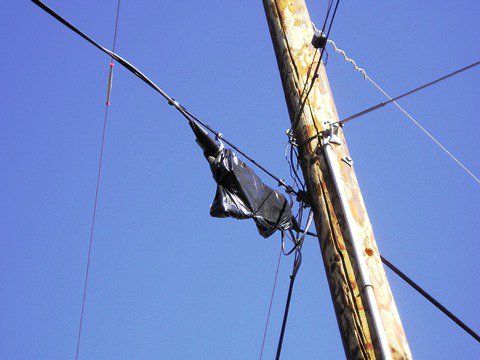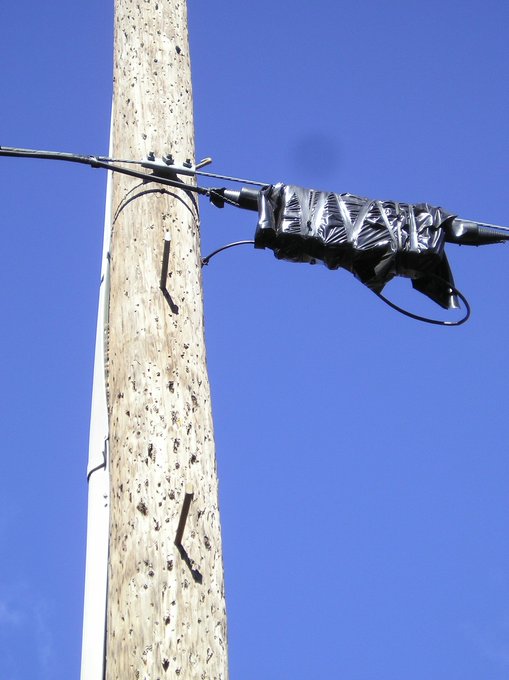A major flaw in current U.S. telecom policy is that takes a completely backwards approach. Instead of first establishing an infrastructure standard – fiber to the premise (FTTP) – it begins with a level of service standard: bandwidth. That set the stage for years of unproductive debate over what constitutes an acceptable level of throughput for Internet service, mostly measured in bandwidth but also latency. At the same time, bandwidth demand doubles about every three years. What was deemed sufficient bandwidth not long ago soon becomes less than adequate. Policymakers end up chasing their tails, caught on the downside of the bandwidth growth curve and skating to where the puck was instead of where it’s going.
Unhappy with slow and congested bandwidth, Americans continually pressure their elected representatives for more bandwidth to support faster throughput, making it one of the top issues for their constituents. Nationwide, the politicians are listening. Hearing their constituent complaints, they proclaim the problem is poor “broadband speeds.” “Better broadband” is the obvious solution. But among them, only Sen. Elizabeth Warren seems to correctly understand the issue. She has put the chips in the correct order in her presidential campaign’s telecom policy. First, it sets forth an infrastructure standard, proposing generous federal grants to electricity and telephone cooperatives, non-profit organizations, tribes, cities, counties, and other state subdivisions to build FTTP reaching every American home. Second, it establishes a level of service standard: symmetrical bandwidth of at least 100 Mbps both directions.
Analysis & commentary on America's troubled transition from analog telephone service to digital advanced telecommunications and associated infrastructure deficits.
Friday, January 31, 2020
Thursday, January 09, 2020
California PUC Report: Worsening landline service from AT&T and Frontier
This disturbing San Jose Mercury News story on a California Public Utility Commission survey covering 2010-2017 found rampant residential landline redlining and lack of investment in landline infrastructure by two of the states largest telcos. From the story:
- Deteriorating service quality. The quality of AT&T and Frontier
voice services has steadily declined over the eight year period, with
the number of outages increasing and the service restoration times
getting longer.- Persistent disinvestment. The depreciation in the value of the
AT&T and Frontier networks was greater than the companies’ capital
investments. This was most pronounced in rural and low-income service
areas.- Degradation of landline service and support. AT&T no longer
actively markets “Plain Old Telephone Service,” or “POTS” and is instead
promoting broadband service to grow revenues.- Failure to improve the network infrastructure to withstand bad
weather or fire events. The companies’ engineering, design and
construction, and maintenance practices are not as robust as they need
to be.- Preferential focus on higher income communities. There is an inverse
relationship between household income and wire center service quality
performance. For instance, AT&T wire centers that have been upgraded
with fiber optic disproportionately serve richer communities. Areas
with the lowest household incomes have the highest trouble report rates,
the longest out-of-service durations, and the lowest percentages of
outages cleared within 24 hours.- Increased focus on the most competitive communities. AT&T and
Frontier offer the greatest service in regions of the state where
competition — and potential loss of customers — is greatest.
The story notes California law mandates telcos to restore 90 percent of service outages for telephone service within 24 hours or less, on statewide average. “Yet the largest service providers routinely fail to meet these requirements,” said CPUC commissioner Clifford Rechtschaffen. AT&T has the financial resources to maintain and upgrade its landline network in California, it has not done so, according to the CPUC. Frontier, in contrast, said it wants to invest in upgrades, but lacks the financial capacity, the Mercury News reports, citing the CPUC report.
A note regarding report item on the promotion of "broadband service" instead of POTs. When AT&T first rolled out Digital Subscriber Line (DSL) service nearly two decades ago, that product was promoted during the initial decade. Now that DSL is being phased out as the copper cable plant is placed in runoff mode, that's no longer the case and no successor residential landline product is being promoted for homes not served with fiber connections.
Friday, December 27, 2019
Patient pension capital funding for FTTP could be game changer
The modernization of America’s legacy twisted pair copper plant to fiber to the premise (FTTP) has been inhibited – described by observers as “stalled” and “stalemated”– by the conservative, risk averse business models of large investor owned players that require relatively rapid and assured returns on capital investment while also paying generous shareholder dividends. Several years ago, Verizon scaled back its FTTP deployment. In 2016, Google Fiber paused new deployments. AT&T hit the brakes on its FTTP deployments this year at the same time voters and policymakers want to press the gas pedal.
The sluggish progress has prompted localities to seek alternative business models that can more rapidly build FTTP infrastructure serving all and not just some premises along with rising demand for greater reliability and better value. The task isn’t easy. State and local governments and their taxpayers still feel the trauma of the economic crisis a decade ago. They’re thus risk averse when it comes to taking on debt or assessing new taxes. If localities are to build FTTP infrastructure and operations and maintenance, they will have to investigate new financing models that require less public funding.
One that is emerging and bears watching is localities partnering with operators of open access FTTP networks that tap pension funds as a source of patient capital. The 30-50 year lifespan of FTTP telecom infrastructure is far better aligned with the long term investment horizon of pension funds than the shorter timelines of investor owned ISPs. And now that advanced telecommunications is considered an essential utility (but not by legacy telcos and cablecos who prefer it be regarded as an information and entertainment service) and FTTP as a future proof means of delivering it to homes, businesses and institutions, there’s less uncertainty its ability to generate demand and revenue over the long term.
So far, European pension management firms appear to be in the game. However, it’s possible American pension funds like the mammoth California Public Employees' Retirement System (CalPERS) could jump in. There are plenty of localities just within California that could be potential partners on FTTP projects, particularly given the state’s two thirds voter approval requirement for most new taxes amid indications of tax exhaustion.
The sluggish progress has prompted localities to seek alternative business models that can more rapidly build FTTP infrastructure serving all and not just some premises along with rising demand for greater reliability and better value. The task isn’t easy. State and local governments and their taxpayers still feel the trauma of the economic crisis a decade ago. They’re thus risk averse when it comes to taking on debt or assessing new taxes. If localities are to build FTTP infrastructure and operations and maintenance, they will have to investigate new financing models that require less public funding.
One that is emerging and bears watching is localities partnering with operators of open access FTTP networks that tap pension funds as a source of patient capital. The 30-50 year lifespan of FTTP telecom infrastructure is far better aligned with the long term investment horizon of pension funds than the shorter timelines of investor owned ISPs. And now that advanced telecommunications is considered an essential utility (but not by legacy telcos and cablecos who prefer it be regarded as an information and entertainment service) and FTTP as a future proof means of delivering it to homes, businesses and institutions, there’s less uncertainty its ability to generate demand and revenue over the long term.
So far, European pension management firms appear to be in the game. However, it’s possible American pension funds like the mammoth California Public Employees' Retirement System (CalPERS) could jump in. There are plenty of localities just within California that could be potential partners on FTTP projects, particularly given the state’s two thirds voter approval requirement for most new taxes amid indications of tax exhaustion.
Wednesday, December 11, 2019
AT&T Targets Labor, Wireline Footprint in New Cost-Cutting Effort | Light Reading
AT&T Targets Labor, Wireline Footprint in New Cost-Cutting Effort | Light Reading: Wireline reductionsAT&T has a very conservative stance on building out fiber to serve residential customers. It's about to get even more so, signalling a likely full and final retreat from the residential market.
As for other cost-cutting efforts, Stankey said AT&T would also look into its wireline operations with an eye toward "product rationalization" and "geographic and footprint rationalization."
"There's a huge opportunity for us to look at our wireline business and how our customers are laid out, and start thinking about what we do to take out layers of cost -- based on the geography we serve and the products that we support -- that maybe have run their course in a fairly mature business," he said, but didn't elaborate further.
Saturday, November 30, 2019
To reduce commute transportation demand and further its climate goals, California should tap pension funds to support advanced telecommunications infrastructure
California Governor Gavin Newsom recently issued an executive order directing the state Department of Finance to create a Climate Investment Framework. The order notes that while the state has established an ambitious goal of reducing greenhouse gas emissions 40 percent below 1990 levels by 2030, emissions from automobiles and other forms of transportation remain a “stubborn driver” of emissions. The order further directs the State Transportation Agency to reduce transportation-based emissions by reducing vehicle miles traveled by bringing jobs and housing in closer proximity and to “encourage people to shift from cars to other modes of transportation.” The order also calls for the state to leverage its $700 billion pension investment portfolio and assets to advance California’s climate leadership.
Placing jobs and housing in closer proximity has historically proven to be difficult to achieve in California given local governments have much more direct jurisdiction over land use planning than the state. A better approach would be to leverage pension funds to support regional projects by local governments to build much needed modern fiber optic telecommunications infrastructure. Pension funds the patient capital needed for long term investments such as infrastructure. This strategy would reduce commute transportation demand by better connecting California communities and allowing office workers to more easily work from their homes and co-working centers instead of piling onto freeways daily and spewing vehicular emissions. It’s particularly timely as the state’s high housing prices in metro areas drive lengthening commutes as people seek affordable homes often located at the edges of metro areas and beyond. This is where advanced telecommunications infrastructure tends to be the weakest but provides the greatest benefit.
Placing jobs and housing in closer proximity has historically proven to be difficult to achieve in California given local governments have much more direct jurisdiction over land use planning than the state. A better approach would be to leverage pension funds to support regional projects by local governments to build much needed modern fiber optic telecommunications infrastructure. Pension funds the patient capital needed for long term investments such as infrastructure. This strategy would reduce commute transportation demand by better connecting California communities and allowing office workers to more easily work from their homes and co-working centers instead of piling onto freeways daily and spewing vehicular emissions. It’s particularly timely as the state’s high housing prices in metro areas drive lengthening commutes as people seek affordable homes often located at the edges of metro areas and beyond. This is where advanced telecommunications infrastructure tends to be the weakest but provides the greatest benefit.
Subscribe to:
Posts (Atom)

